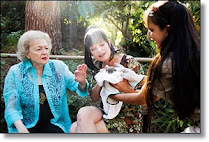There are very few surprises that will startle you more
than discovering a lump or bump on your dog. As your hand wanders over your
canine pal in affectionate scratching or petting, your fingers just may chance
upon a lump that “was not there before."
It will scare the biscuits out of you ... that nagging
"C" word drifting about the back of your mind, your first fear is
that your dog might have cancer. Setting in motion your search for an answer as
to what this lump is you make a quick trip to the…I hope that lump isn't
serious.
"How long has this been here?" the veterinarian
asks. "Just found it yesterday, doctor," you respond.
"Let’s see if we can find any others," says the
doctor as experienced and sensitive hands work the dog over. Sure enough, "Here’s another one just
like it!" says the doctor as she places your hand right over the small,
round, moveable soft mass under the skin of the dog’s flank.
"I think these are what we call Lipomas, just fat
deposits under the skin. They are very common and usually present no
problems," says the doctor. Your relief at hearing the good news is cut
short as the doctor continues …
"However, we honestly do not know what these lumps
truly are unless we examine some cells under the microscope. So I’d suggest
that we do a simple needle biopsy, place some cells on a slide and send the
slides to a veterinary pathologist for a definite diagnosis."
The doctor in this case is being thorough and careful. How
true it is that a definitive diagnosis of "what it is" simply cannot
be made without microscopic examination of the lump’s cells. A veterinary
specialist in pathology is the final authority and judge when it comes to
shedding light on these lumps and bumps that we too often find on our canine pals.
The lipoma is one of the most commonly encountered lumps
seen by veterinarians during a physical exam. These soft, rounded, non-painful
masses, usually present just under the skin but occasionally arising from
connective tissues deep between muscles, are generally benign. That is, they
stay in one place, do not invade surrounding tissues and do no metastasize to
other areas of the body. They grow to a certain size and just sit there in the
tissues and behave themselves.
Most lipomas do not have to be removed. Occasionally,
though, lipomas will continue to grow into huge fat deposits that are a
discomfort to the dog and present a surgical challenge to remove. And even more
rarely, some lipomas will be malignant and spread throughout the dog’s body.
IS IT A TUMOR?
And therein lies the true challenge in dealing with lumps
and bumps on dogs -- we simply cannot predict with 100% accuracy just what any
of these foreigners will do. So we do the best we can by removing them when
indicated or keeping a close guard over them so that at the first sign of
change they can be removed.
Not every lump or bump on your dog will be a tumor. Some
superficial bumps are due simply to plugged oil glands in the skin, called
sebaceous cysts. Skin cysts can be composed of dead cells or even sweat or
clear fluid; these often rupture on their own, heal, and are never seen again.
Others become chronically irritated or infected, and should be removed and then
checked by a pathologist just to be sure of what they are. Some breeds, especially
the Cocker Spaniel, are prone to developing sebaceous cysts.
And yes, the sebaceous glands in the skin do occasionally
develop into tumors called sebaceous adenomas.
According to Richard Dubielzig, DVM, of the University of Wisconsin,
School of Veterinary Medicine, "Probably the most commonly biopsied lump
from dog skin is a sebaceous adenoma. This does not mean it is the most
commonly occurring growth, just that it is most commonly biopsied." Fortunately
this type of skin growth rarely presents trouble after being surgically
removed.
So how are you to know which lumps and bumps are dangerous
and which can be left alone? Truthfully, you are really only guessing without
getting the pathologist involved. Most veterinarians take a conservative
approach to the common lipomas and remove them if they are growing rapidly or
are located in a sensitive area.
However, caution needs to be observed because even the
common lipoma has an invasive form called an infiltrative lipoma. For example,
when a nasty looking, reddened, rapidly growing mass is detected growing on the
gum aggressive action is indicated.
Also, keep in mind that not all lumps and bumps are cancerous, and some
are fairly innocent and do not warrant immediate surgery.
Non-cancerous lumps
Cysts, warts, infected hair follicles, hematomas (blood
blisters) and others do cause concern and can create discomfort for the dog,
though non-cancerous lumps have less health impact than cancerous growths.
Cancerous lumps
Cancerous growths can be either malignant or benign, and
occasionally even share characteristics of both. Malignant lumps tend to spread rapidly and
can metastasize to other areas of the body. Benign growths tend to stay in the
place of origin and do not metastasize; however they can grow to huge
proportions (see such an example of inoperable tumor pictured on the right).
Mammary gland tumors, mast cell tumors, cutaneous
lymphosarcoma, malignant melanoma, fibrosarcoma and many other types of tumors
with truly scary names command respect and diligent attention on the part of
dog owners and veterinarians.
DIAGNOSIS
Below are the most common methods of finding out "what
it is" …
Impression Smears
 Some ulcerated masses lend themselves to easy cell
collection and identification by having a glass microscope slide pressed
against the raw surface of the mass. The collected cells are dried and sent to
a pathologist for staining and diagnosis. Sometimes the attending veterinarian will
be able to make a diagnosis via the smear; otherwise, a specialist in
veterinary pathology will be the authority regarding tumor type and stage of
malignancy.
Some ulcerated masses lend themselves to easy cell
collection and identification by having a glass microscope slide pressed
against the raw surface of the mass. The collected cells are dried and sent to
a pathologist for staining and diagnosis. Sometimes the attending veterinarian will
be able to make a diagnosis via the smear; otherwise, a specialist in
veterinary pathology will be the authority regarding tumor type and stage of
malignancy.
Needle Biopsy
Many lumps can be analyzed via a needle biopsy rather than
by total excision. A needle biopsy is performed by inserting a sterile needle
into the lump, pulling back on the plunger, and "vacuuming" in cells
from the lump. The collected cells are smeared onto a glass slide for
pathological examination. Usually the patient isn’t even aware of the
procedure. Total excision of the mass is attempted if the class of tumor
identified warrants surgery.
CT Scans
Superficial lumps and bumps do not require that CT Scans be
done, so this procedure is usually reserved for internal organ analysis. If a
superficial malignant tumor is diagnosed, however, a CT Scan can be helpful in
determining if metastasis to deeper areas of the body has occurred.
Radiography
As with CT Scans, X-ray evaluation is generally reserved
for collecting evidence of internal masses. Most lipomas are superficial and
reside under the skin or skeletal muscles. There are other lumps that can be
palpated by the veterinarian via manual examination; however, the extent and
origin of that mass will often be best revealed via CT Scanning.
TREATMENT
Since every type of cell in the body potentially could
evolve into cancerous tissue, the types and ferocity of tumors that develop in
the dog are numerous and highly varied. Each case needs to be evaluated on its
own circumstances and variables. For example, should surgery be done on a
16-year-old dog with what appears to be a 3-inch wide lipoma? Maybe not. Should
that same dog have a quarter inch wide, black, nodular mass removed from its
lower gum. Probably should! That small growth may be a melanoma that could
metastasize to other areas of the dog’s body.
Surgery
An important basic tool in eliminating a nuisance or
dangerous lump is to surgically excise it.
Chemotherapy
Chemicals that are highly toxic to rapidly dividing cells
make up an important mode of treatment for fast growing tumors. A combination
of surgery and radiation/chemotherapy can help the veterinarian gain the upper
hand in achieving a cure. Chemotherapy is often employed as an additional
precautionary procedure after a mass has been "removed" via surgery.
Radiation
For invasive tumors that do not have well defined borders
and for tumors that tend to spread rapidly, radiation therapy can be a
lifesaver. Available at most veterinary medical schools and some veterinary
specialists in radiology, radiation therapy is appropriate for certain types of
tumors. Radiation is often employed in addition to surgical excision.
Experimental
Emerging science such as gene therapy and immunotherapy
hold promise for some amazing ways to combat tumors. The future looks promising
for these new methods of dealing with tumors.
According to Dr. Dubielzig, the best approach to
understanding what to do about a lump or bump on your dog is to be vigilant and
treat each situation individually. "In cases where vigilance for tumors is
part of the animal’s care, such as in animals where a malignant tumor has been
removed and the veterinarian wishes to keep abreast of the stage of disease,
then every lump should be submitted for histopathology," Dubielzig said.
"In other cases where the clinician is sure of a benign diagnosis such as
lipoma or a wart-like skin mass then it might be understandable to use
discretion. The clinician also has to take into consideration the risk of
surgery compared to the risk of health problems from a particular lump or
bump."
Take a good surface inventory of your dog today, then at
least once a month from now on. If you find any imperfections, take heart in
knowing that modern veterinary medicine has some very effective remedies for
almost all of these lumps and bumps.
FOLLOW US!
































